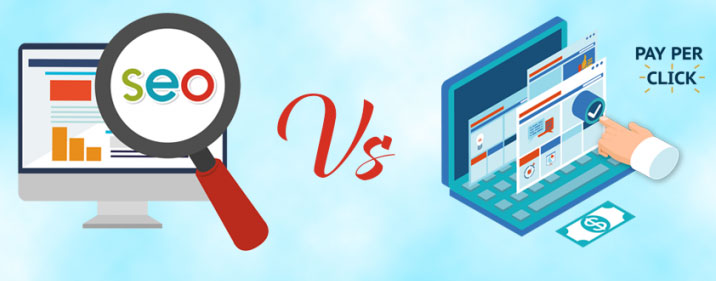
Juggling Between Organic and Paid Traffic – Where Should Your Focus Be?
If you’re a businessman or are planning to start running an adult business soon, we’re pretty sure you already have a great many numbers of things on your mind already and also juggling between organic and paid traffic. Not the least of these things will be the proper marketing and promotion of your business. Recently, there has been a great shift in the dynamics of running any sort of business. The focus is now more on promotions and creating a general awareness than ever before. Marketing now forms the crux of running a successful business venture. But how do you go about marketing your products and services in this fast-paced world? Obviously, the solution has to be something that can be accessed whenever and wherever, and hardly takes up more than a few minutes of your customer’s time. And if there’s one medium that satisfies all these parameters, it’s the internet.
The internet has rapidly ascended to take television’s place as the most widely used form of marketing and advertising. All forms of businesses utilize the web and its subsidiaries to promote their content and reach out to their customers. And if there’s one thing that rules all over internet marketing and advertising, it’s search engine optimization. If you’re planning to take your business online, you can’t possibly do away with managing extensive promotions via search engines, because it is through them that your customers will find your website. But for search engines to display your website, you must first optimize it as per a set of rules and conventions.
Why Must You Pay?
But even if you manage to optimize your website, it is a tough world out there. The competition is fierce and the competitors more than you can imagine. Which is why, for you to earn money, you must first pay money. While organic traffic refers to the traffic or customer footfall for your website which is natural in nature, paid traffic refers to that portion of your customer traffic which has been paid for by yourself. The question we’re trying to answer here is, which one of these two forms of traffic is preferable? Obviously, anyone would want to get free service if it is available, but is organic traffic enough for running a successful venture, and is paid traffic really worth it? Let us try to find out.
Let us first look at a few key terms which may be helpful for our purposes.
Organic Traffic
Organic traffic, as defined earlier, is simply natural traffic. It originates from organic search, which is simply the search conducted on search engines. Thus, organic traffic never results from other websites or advertisements placed on the web. It is the simple process of conducting a search, which yields certain results, and if one of these results happens to be your website, then the people who come to your website after clicking on that result comprise organic traffic.
Pay Per Click Traffic
Pay Per Click traffic is simply the opposite of organic traffic. While organic traffic comes naturally to your website, you need to pay for pay per click traffic. Let us suppose you place an ad somewhere on the web. If a user clicks on that ad to visit your website, then that visitor becomes a part of paid traffic since you must’ve paid a certain amount to get the ad displayed. There are several web services such as Google AdWords, LinkedIn, and the Yahoo! Bing Network which let you set up marketing campaigns aimed at displaying your advertisements on popular websites in order to fetch the most amount of traffic. For such ads, you have to pay only when a user clicks on your ad. Even the location of your ads on the page is of prime importance and is determined using a quality score or a bidding process.
To learn basics of adult SEO, checkout my post on How Adult SEO Works
 Organic Traffic: Pros & Cons
Organic Traffic: Pros & Cons
One of the foremost features and advantages of organic traffic is that since the customer willingly clicked on your link, they’re already interested in the content you have to offer. Also, there’s an authority associated with your website, since it was one of the high ranking results on a search engine. Another important factor is that organic traffic generally makes way for improved and better quality pages. The reason behind this is that for organic traffic to take place, you must rank high in the search engine’s index, but for that to happen, your website must be optimized and your content top-notch. However, the one glaring downside to organic traffic is that it requires constant work and efforts from your side. In other words, it requires much of your time.
Pay Per Click Traffic: Pros & Cons
While organic traffic, as specified earlier takes up a lot of your time, and requires a lot of patience and waiting in order to see results, pay per click traffic calls for a lot less than that. It takes very little time and the results are pretty rapid in nature. Also, once you have paid for a spot, you can rest assured that it will not be taken away, an assurance that is seldom missing in organic traffic. A great advantage to paid traffic is that the audience you target with your campaign will exactly be the kind of audience you would have been hoping for. This is because paid traffic allows you to shape your ads and campaigns in a way that they attract just the kind of traffic that you’re hoping for. The one obvious disadvantage of paid traffic is the fact that you’ve to pay. In fact, more the money that you’ll spend better will be the services offered to you. The scheme is so much dependent on your money that as soon as your funds run dry, the traffic might stop coming too.
The Verdict
The verdict is that there’s actually no contest at all. It is all about choosing what’s right for you as a businessman or a marketer, keeping in mind your own conditions and requirements. Both of these methods of gaining traffic are two sides of the same coin and have the same end result. Now it is up to you, the user, to choose the path that you want to take.
Editor’s Recommended: Top Rated Adult SEO Strategies
